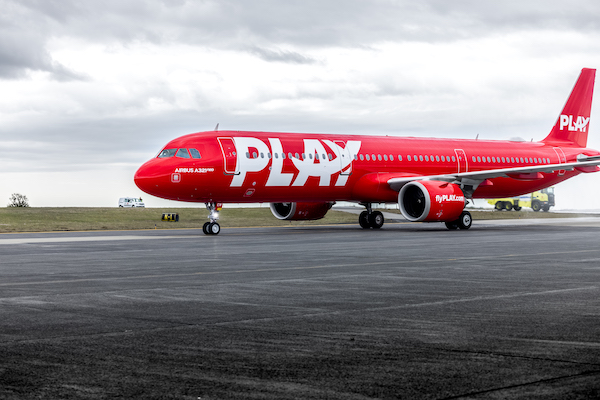Budget airline Play recently reported a substantial increase in losses, attributed to the aftermath of seismic events.
Amidst financial challenges, Play sees a path forward by addressing misconceptions surrounding Iceland’s safety.
Iceland has long been admired for its stunning natural landscapes, yet recent volcanic activity on the Reykjanes peninsula has cast a shadow over its image. The country’s tourism industry has felt the reverberations, with the budget airline, Play, reporting significant financial losses. These losses, amounting to $4.5 million in contrast to $900,000 last year, highlight the challenges faced due to lingering safety misconceptions about Iceland.
The chief executive of Play, Einar Orn Olafsson, emphasised the impact of local and international factors, such as the shifting timing of major holidays like Easter, which affected quarterly earnings. Moreover, Iceland is in competition with neighbouring countries that have invested heavily—around €21 million (£17.7 million)—in tourism marketing, which Olafsson points out as a sizeable challenge for Iceland’s own tourism marketing efforts.
Emphasising the actual safety of Iceland, rather than the perceived risks associated with its breathtaking volcanic features, could help restore confidence. Targeted campaigns would aim to educate tourists, potentially through social media and other digital platforms, countering any erroneous beliefs. Such efforts can assure visitors and highlight Iceland’s commitment to ensuring tourist safety.
The strategy should incorporate an appealing narrative about Iceland’s culture, history, and geography, intertwined with the undeniable safety of visiting. Engaging storytelling, coupled with vibrant imagery, would serve to captivate and assure prospective visitors. This comprehensive approach could enhance Iceland’s image as a must-visit destination.
This alignment with GDSs signifies a strategic move towards modernising Iceland’s tourism infrastructure. By enhancing connectivity and streamlining access, the tourism industry hopes to attract a broader audience, counteracting the current decline in tourist numbers.
The collaboration between tourism leaders and government in strategising effective campaigns is pivotal. Their joint efforts aim not only to rectify misconceptions but to elevate Iceland’s global standing as a fascinating and safe tourist destination.
Iceland stands at a critical juncture, with the potential to re-establish itself as a top-tier destination. By dispelling safety myths through concerted marketing and embracing innovative global partnerships, Iceland can attract a wave of new visitors eager to explore its unique landscape and culture. These efforts will play a crucial role in revitalising the tourism industry, securing Iceland’s place on the world travel map.
Revitalising Iceland’s tourism requires addressing safety misconceptions and strategic marketing.
Collaborative efforts and innovative partnerships can help restore Iceland’s image as a safe and desirable destination.

